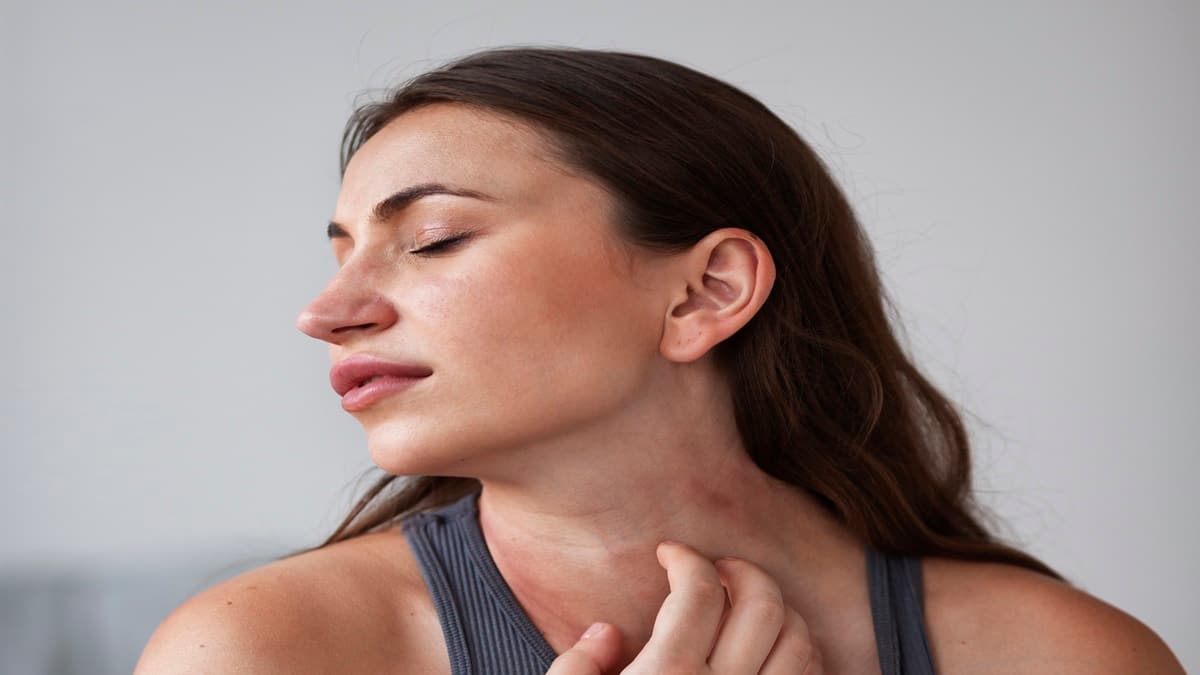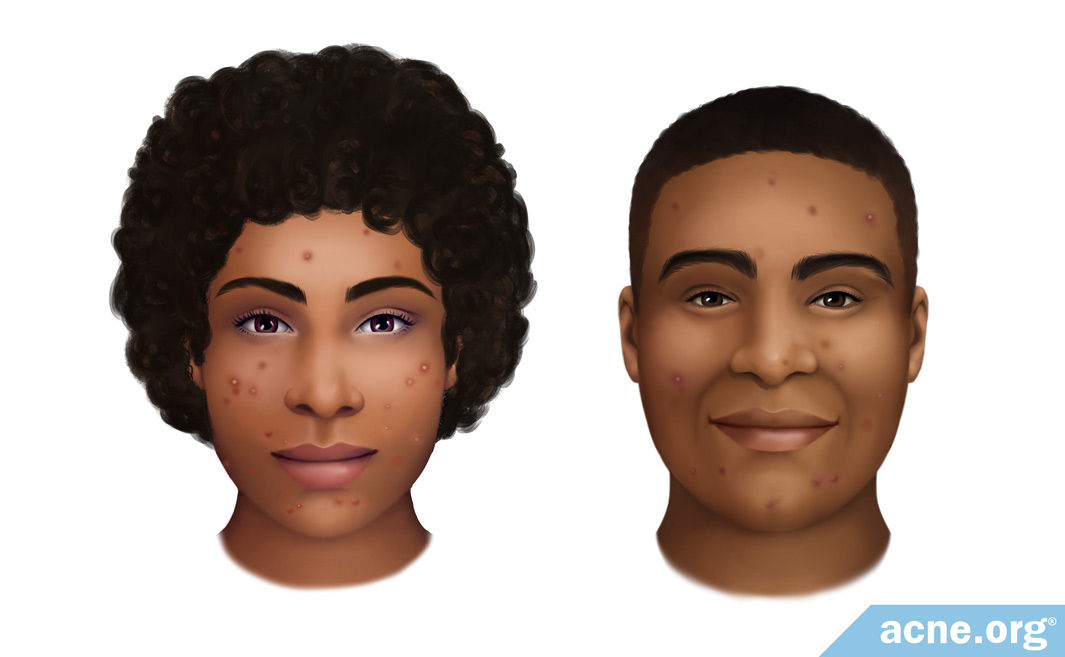Views: 0
What do Jessica Simpson, Kerry Washington, Elle Fanning, Tia Mowry, Kristen Bell and Seonghwa have in common? Well, apart from being well-known celebrities, they have all battled with skin conditions and have either announced or discussed them on social media.
What do Jessica Simpson, Kerry Washington, Elle Fanning, Tia Mowry, Kristen Bell and Seonghwa have in common? Well, apart from being well-known celebrities, they have all battled with skin conditions and have either announced or discussed them on social media.
Singer and actor Jessica Simpson, for instance, has shared her challenges with atopic dermatitis, a common form of eczema, in the past, and so have actors Kerry Washington, Elle Fanning, Tia Mowry and Kristen Bell, and popular K-pop star Seonghwa (of the boy band ATEEZ). Seonghwa even took to social media to say how he ‘kept his nails short to try to prevent them from scratching’ or has been exceptionally careful with makeup and skincare in general.
There are many forms of skin allergies such as atopic dermatitis (eczema), allergic contact dermatitis (an itchy, swollen rash caused by the skin’s reaction to an allergen or irritant in the environment), urticaria (hives) and angioedema (swelling). Among them, eczema is a serious condition, if left undiagnosed or untreated.
Vandana Rajput (name changed on request) is a case in point. The 29-year-old marketing professional was quite casual about her skin condition for close to a year.
However, recently, she saw some physical changes to her skin, and had to rush to the doctor for prompt medical attention. “It was not rash but red scars, itchy and with swollen cheeks. I started having fever occasionally and, at times, I had issues in breathing, with pain in my chest, and bruising and excessive swelling in the face even after a good night’s sleep,” she adds.
After several evaluations by healthcare and medical experts, Rajput found out about the dangers and various forms of dermatitis, with her case being a severe one too. The doctors gave her insights on the common factors that cause dermatitis, which include allergens such as pollen, pet dander, and even certain types of foods, or irritants like soaps, detergents, or chemicals, genetic predisposition, immune system abnormalities, and environmental conditions, and she was taken by surprise.
Touching base
Dermatitis means inflammation of the skin. While eczema is a term used to describe a group of skin conditions in which the skin is itchy, dry, and inflamed, it leads to redness, or the development of a rash. Dermatitis can be caused by various factors, including allergies, irritants, genetic factors and immune system abnormalities.
According to Dr Amit Vij, senior consultant, Artemis Lite, New Friends Colony, Delhi, there are several types of dermatitis, each with distinct triggers and characteristics. The main types include:
Atopic dermatitis: A chronic condition associated with allergies and often runs in families.
Contact dermatitis: Caused by direct contact with irritants or allergens, leading to localised inflammation.
Seborrheic dermatitis: Commonly affects the scalp, face, and chest, resulting in flaky, red skin.
Nummular dermatitis: Characterised by coin-shaped patches of inflamed skin.
Allergic contact dermatitis: Caused by an allergic reaction to specific substances, like certain metals or cosmetics. Understanding the type of dermatitis is crucial for appropriate treatment and management of the condition.
FAST FACTS
What triggers atopic dermatitis?
- Temperature and humidity
- Harsh soaps and detergents
- No protective clothing for dry and cold weather changes Stress
- Dust mites, animal dander and inhalant allergens in the environment
- Microbial infections
- Lack of sleep
- Food allergens (more common in children)
What are the treatment options available?
Skin care and medications
for inflammation vary depending on the severity and extent of the disease.
Ask your doctor for treatment options
As per US-based World Allergy Organization, an international umbrella organisation of 109 regional and national allergology and clinical immunology societies that cooperate across 27 committees, atopic dermatitis (AD), also termed eczema, is a type of inflammatory skin disease that disrupts the skin barrier and its ability to hold moisture. It is the most common chronic skin disease and is genetically transmitted. AD affects individuals of all ages but most commonly begins in infancy and early childhood. It can last into adulthood and also can begin developing in adulthood.
Dermatitis can also be hereditary, says Dr Vij. “Atopic dermatitis, in particular, tends to run in families, suggesting a genetic predisposition. If one or both parents have a history of atopic conditions like eczema, asthma or hay fever, there is an increased likelihood of their children developing atopic dermatitis.
Dermatitis becomes evident through various symptoms, including redness, itching, swelling and the formation of a rash on the skin. The affected area may become dry, scaly and sometimes ooze fluid. If these symptoms persist or worsen, it’s essential to seek medical attention for proper diagnosis and treatment. A dermatologist can assess the condition and recommend appropriate measures to manage and control dermatitis,” he adds.
Dr Trupti D Agarwal, dermatologist, trichologist, dermatosurgeon and aesthetic dermatologist, Kokilaben Dhirubhai Ambani Hospital, Mumbai, feels the most common kinds are scratchy cracked skin and an allergic reaction. “While dermatitis is not infectious, it can cause discomfort and anxiety. It can be caused due to both genetic and environmental factors. Even though anyone can develop eczema, research indicates that people who already have allergies, asthma or eczema are more likely to pass it on to their offspring,” says Agarwal.
KNOW YOUR SKIN ALLERGIES
Apart from eczema, hives (urticaria) are red bumps or welts that appear on the body
- Contact dermatitis can appear when skin comes in contact with an irritant or an allergen. Soaps, laundry detergents, fabric softeners, shampoos—even excessive exposure to water—can cause contact dermatitis
- Other items that can cause a reaction are metals (such as nickel, a component of stainless steel and other alloys used to make costume jewelry), adhesives, nail polish, topical medications, plants and latex gloves
- Photoallergic contact dermatitis is another type of dermatitis when an irritant or allergen causes a reaction only after being exposed to the sun. Sunscreens, shaving lotion and some perfumes are major causes of occurrence
Dermatitis often comes from exposure to substances that irritate the skin or set off an allergic reaction, such as nickel-containing jewellery, perfume, hair dye, and various lotions, and Agarwal feels conditions that affect the seborrheic areas of the body include seborrheic dermatitis (SD) and dandruff.
“They appear to be the same basic condition, with many similarities and responses to similar treatments, varying only in area and extent. For instance, dandruff is a scalp condition characterised by itchy, flaking skin with no visible irritation. Seborrheic dermatitis can cause flaking, scaling, inflammation, pruritus (itchy skin) on the scalp, face, retro-auricular area, and upper chest as well as significant erythema (a skin condition that can impact skin and mucous membranes). Typically white to yellowish in colour, seborrheic dermatitis or dandruff flaking can be either oily or dry. Regular skin hydration aids in symptom management. Treatment options include the use of medicated shampoos, creams, and ointments,” says Agarwal.
Eczema may seem a common skin condition in children or young adults. However, studies suggest that it can appear at any age. Recent data points shared at the 25th World Congress of Dermatology in Singapore suggest that children with a family history of allergic conditions may benefit from screening to assess their likelihood of developing dry, itchy, sensitive skin conditions (which may or may not be related to atopic or eczema prone skin).
DANDRUFF IS ALSO DERMATITIS
- Dandruff can be considered a mild form of dermatitis. It affects the scalp and is characterised by flaking of the skin, resulting in white or yellowish scales (dandruff) on the hair and shoulders. Also known as seborrheic dermatitis, it is believed to be caused by an overgrowth of yeast on the skin, leading to inflammation and excessive shedding of dead skin cells. While it is not as severe as others, it can still cause discomfort and embarrassment
- Treatment options: Medicated shampoos, topical creams and lifestyle adjustments can manage the condition effectively
Kenvue, the consumer health subsidiary of Johnson & Johnson Consumer, supported a study to investigate whether certain markers of skin health could predict risk of having atopic or eczema prone skin in children from birth. The survey, commissioned by Aveeno, a skin care and hair care products brand by Kenvue, surveyed 1,003 parents with children aged five years and below across India and found over 42% parents across India had atopic prone skin or had someone in their immediate family with such conditions, 65% had such skin conditions or other allergic conditions in the immediate family. Over 69% parents are not aware of preventative treatment for dry, itchy, sensitive skin (which may or may not be related to atopic or eczema prone skin) and 80% parents proactively tried one or more preventative methods to delay the onset of symptoms in their children before an official diagnosis was made.
Keshan Gunasinghe, head of APAC R&D, Kenvue, says, “The study helps us understand skin surface markers for children at risk of developing dry, itchy, sensitive skin conditions (which may or may not be related to atopic or eczema prone skin). The insights are pivotal as we continue delivering innovative and trusted paediatric skin health solutions built on strong scientific evidence through close collaboration with the paediatric dermatology community.”









